The driving directions from the hotel were: follow the signs to centro and go to Piazza Maggiore, we are next to the St Petronio cathedral. It was raining pretty hard and street signs are hard to find in the rain, even harder when you don’t know what you’re looking for.
We followed the signs to centro but couldn’t see any signs to Piazza Maggiore, which was odd since it is the largest square in all of Bologna. At one point I asked a local for directions who turned out to be mute. She read my lips to see I was saying Piazza Maggiore but when she spoke to give me the directions, I couldn’t understand her. My Italian wasn’t that good and her words were really hard to comprehend.
The sky was getting darker, the streets were getting narrower, the buildings were getting older, and in the distance we could see what looked like a very big medieval square. Traffic close to the square was limited to public transportation but since we had reservations at a hotel on the Piazza, we told the Police and they let us through. We had passed the first chequepointe. About 200 meters down the road, we came to another police stop. Once again, we rolled down the window and asked them for directions to Hotel Commercianti. At first they told us it was on the other side of the Piazza. Then they told us to pull over.
Our car has red French transport plates, which means we can drive it anywhere for three months without registering it to any city. At first they looked at the registration papers and everything looked in good order. Then they asked for the “patante” driver’s license. Gretchen was driving and so she handed them her California driver’s license. Then they asked for the “traduzione” the international version of the license. Now I’ve been renting cars in Europe for almost 25 years. I’ve always been able to use my American driver’s license in any international location. When I’ve rented cars from any country, including Italy, the car agency would ask to see my American driver’s license and that was all they needed. I never heard of a need for an international driver’s license. But these polizi insisted that according to rule 103 of the penal code, all non Italian drivers are required to have an approved international driver’s license. We tried to reason with them. We tried to argue with them. We called Paola Cinelli, our friend in Tuscany, and had her argue with them, but they were unswayed as they continued to write up the ticket. To make matters worse, it started to rain. Paola suggested we just pay the ticket. If we pissed them off, they could give us a steeper fine or even impound the car. We asked the polizi if we could protest the fine and they said yes, but if we wanted to protest, the fine would double. If we won the protest, we’d get our money back. If we lost, we’d pay the double amount. It didn’t look very good for us. At first we thought it was a shakedown scam by the local police, but Bologna is known as being one of the least corrupt cities in all of Italy. They pride themselves by “going by the book”.
The fine for driving in Italy without the proper driver’s license is 68.25 euro (about $76). Now in all the years we’ve been driving in Italy, we broken many traffic laws ranging from turning down streets the wrong way, running red lights, turning on a red light, speeding on the autostrada, parking in no parking zones and overparking in a paid parking zone. I guess it all finally caught up to us. What I’m confused about is why the auto rental agencies don’t require international licenses.
We have since paid for the International License before we travel anywhere. It’s actually very easy to obtain. If you’re a AAA member, it’s free. If not, you can still get it from AAA for around $15. You can also go to a number of other agencies (search the web).
Ok, we were really pissed off about getting a $76 traffic violation. It was a bad introduction to Bologna but we weren’t going to let it ruin our few days here.
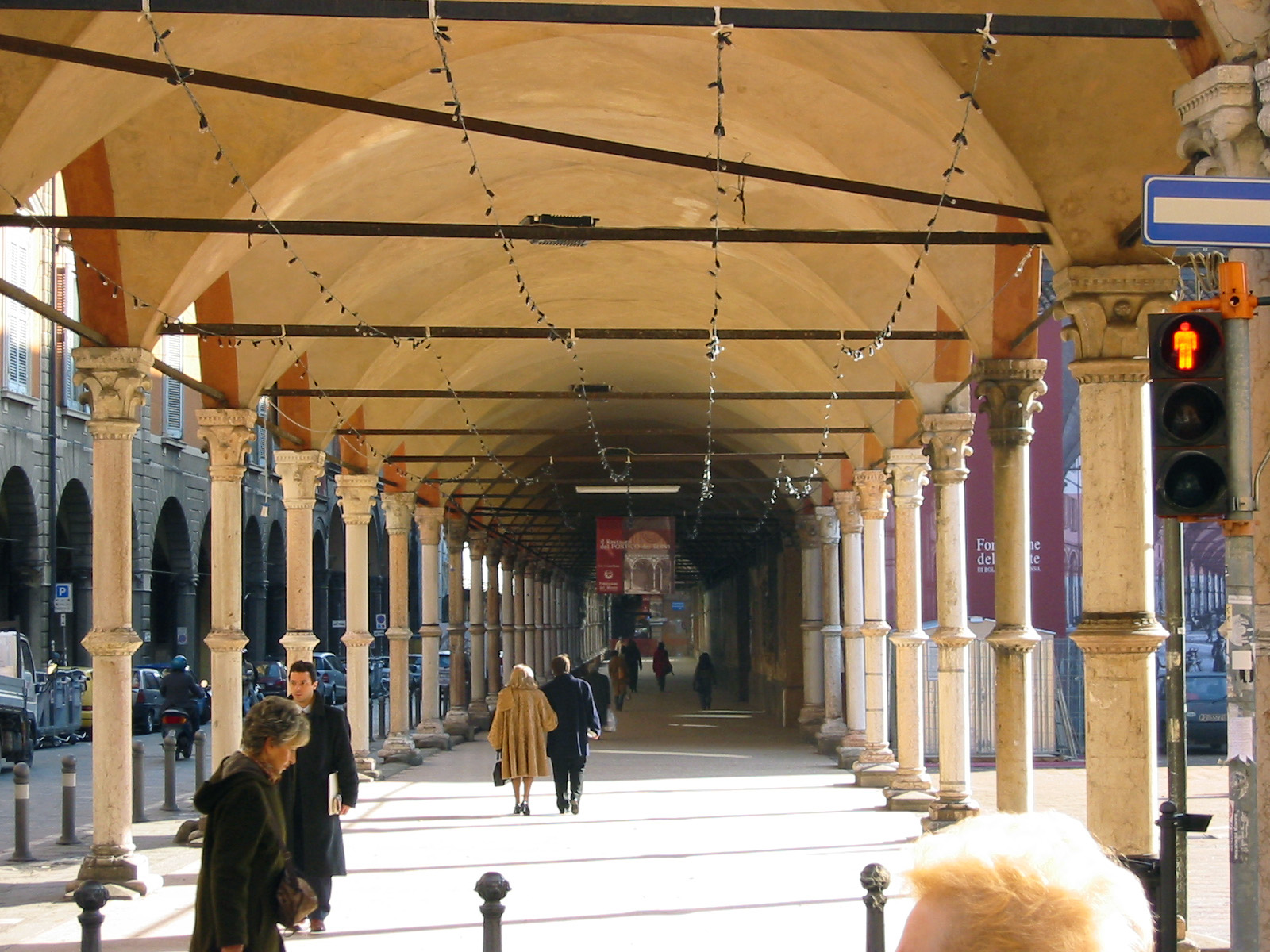 Bologna is a city of covered arches, over 74 km of these portici line the streets. For all of you trying to figure out how long this is, a mile is 1.6 kilometers. Bologna houses the oldest University in the world dating back to 1088 and when the student population grew beyond what the city could support, the old buildings were enlarged to provide extra rooms for the students. The porticoes were built to support the retrofit. But even after the municipality got the student population under control, the Bolognese decided they really liked the covered walkways and soon after they became the fashion of the city. It doesn’t matter what the weather might be, in the hot summer months they provide shade from the sun. In the rainy months, well… not too many umbrellas needed in this city.
Bologna is a city of covered arches, over 74 km of these portici line the streets. For all of you trying to figure out how long this is, a mile is 1.6 kilometers. Bologna houses the oldest University in the world dating back to 1088 and when the student population grew beyond what the city could support, the old buildings were enlarged to provide extra rooms for the students. The porticoes were built to support the retrofit. But even after the municipality got the student population under control, the Bolognese decided they really liked the covered walkways and soon after they became the fashion of the city. It doesn’t matter what the weather might be, in the hot summer months they provide shade from the sun. In the rainy months, well… not too many umbrellas needed in this city.
Bologna has been known as the “Red City”, supposedly because of the red terra cotta roofs in the old historic area. However, this is one of the most socialist cities in all of Italy and most Italians equate the “Red City” with Bologna’s socialist/communist political views.
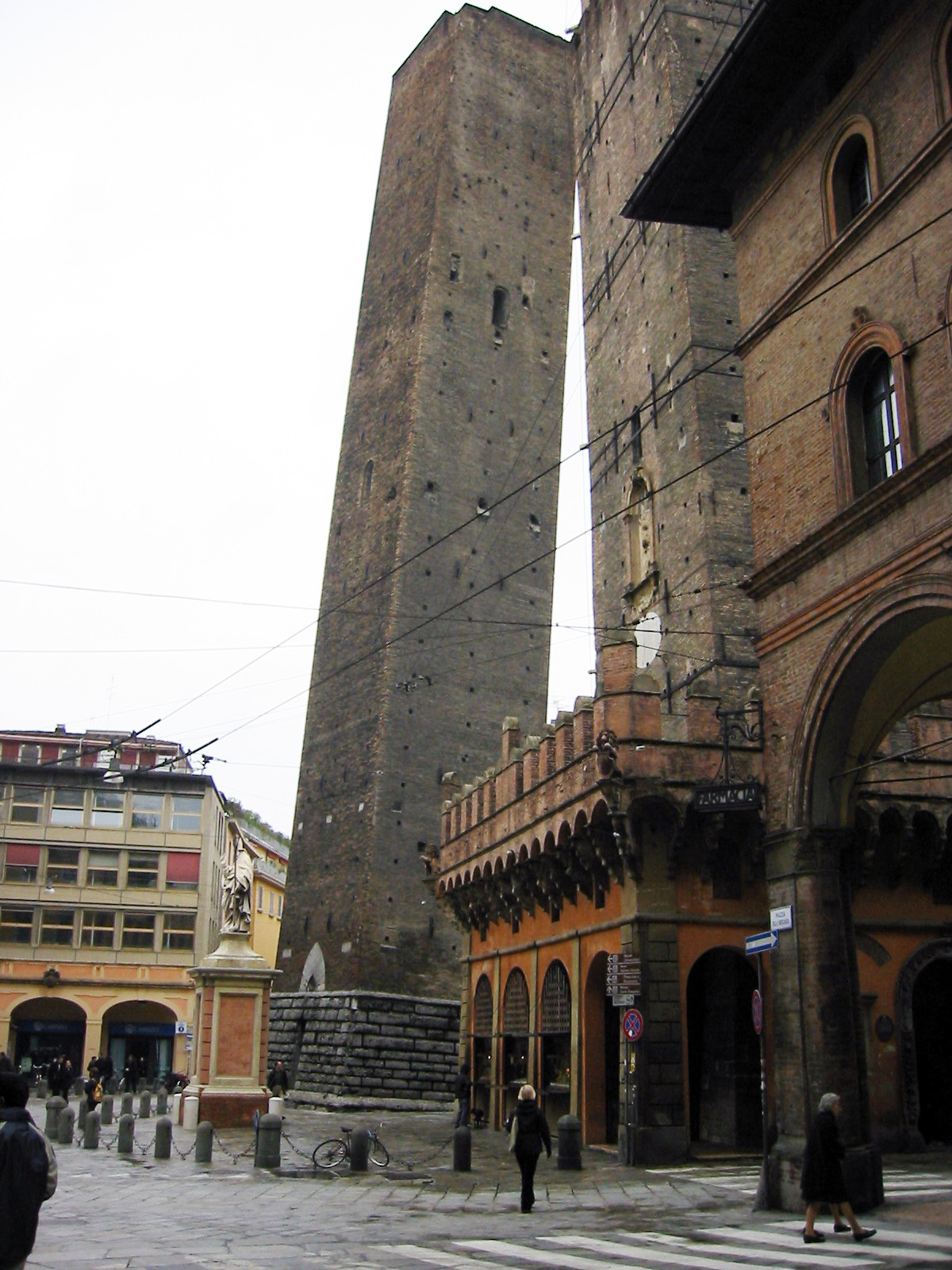 A couple a strange medieval towers also claim the symbolic reference to the city. The tall and slender Asinelli and squat and almost silly looking Garisenda are all that remain of the 200 plus towers that were either torn down during feudal wars or collapsed from just plain old gravity. Asinelli still stands proud at 318ft tall, although it leans 7 ft out of square, but Garisenda, at 10 ft out of square is such an architectural failure, that in 1360, the Bolognese tore it down for fear it would collapse on a nearby building. All that’s left is a 157 ft squat reminder of a really bad design.
A couple a strange medieval towers also claim the symbolic reference to the city. The tall and slender Asinelli and squat and almost silly looking Garisenda are all that remain of the 200 plus towers that were either torn down during feudal wars or collapsed from just plain old gravity. Asinelli still stands proud at 318ft tall, although it leans 7 ft out of square, but Garisenda, at 10 ft out of square is such an architectural failure, that in 1360, the Bolognese tore it down for fear it would collapse on a nearby building. All that’s left is a 157 ft squat reminder of a really bad design.
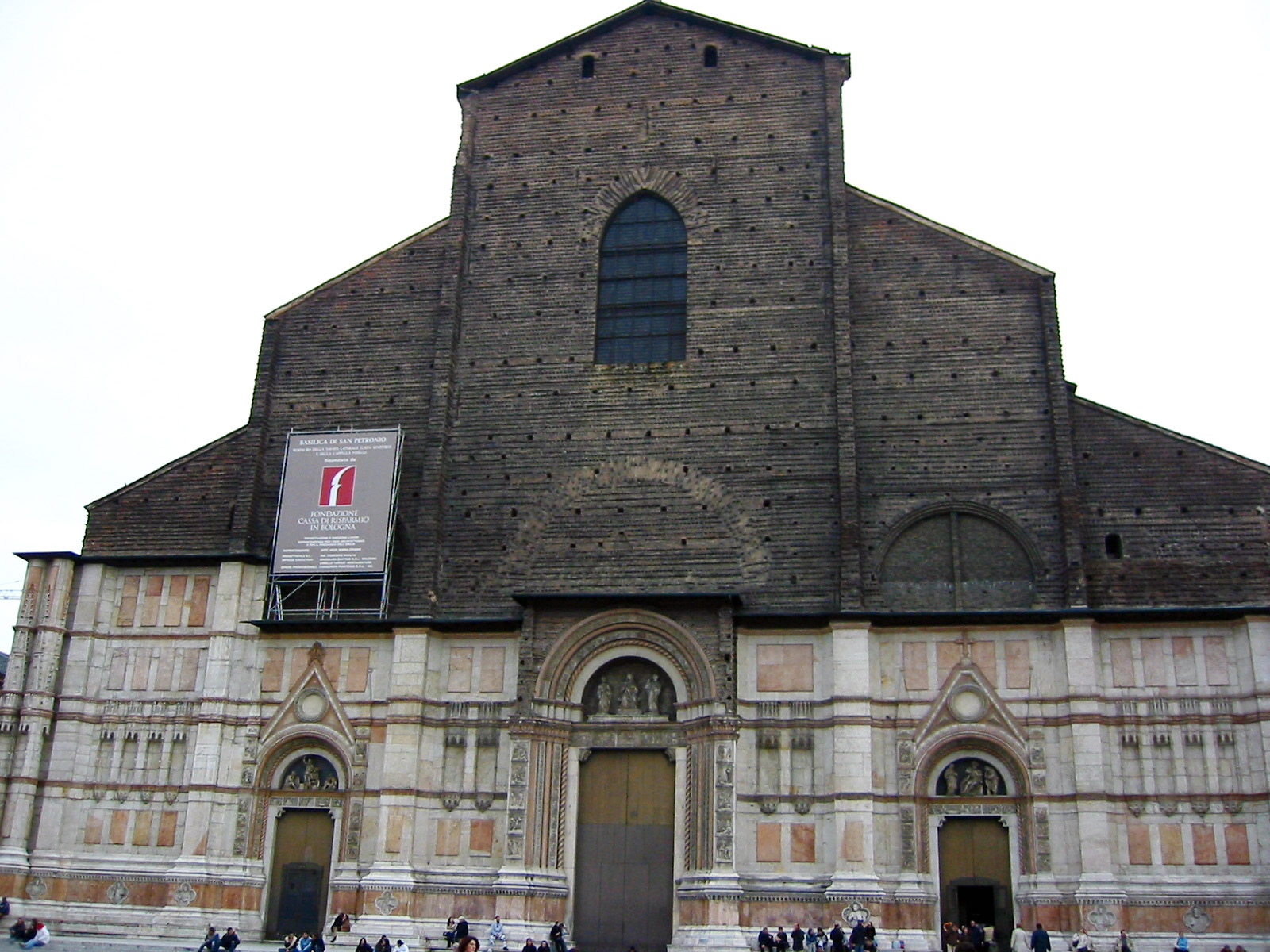 There’s much more to this city then the towers and the arcades. We’re staying just off the grand Piazza Maggiore where the unfinished façade of the St Petronio Cathedral is right outside of our hotel window. This is an enormous church, the 15th largest in the world but the façade an unfinished skeleton of bricks. As the story goes, around 1514, the Bolognese began renovations to the church that would have made it larger than St Peter’s in Rome. When the Pope found out, he cancelled all funding to St Petronio. Work stopped and it never started again. The Bolognese added insult to injury by cutting off the transept of the church in both directions to make room for newer buildings on either side.
There’s much more to this city then the towers and the arcades. We’re staying just off the grand Piazza Maggiore where the unfinished façade of the St Petronio Cathedral is right outside of our hotel window. This is an enormous church, the 15th largest in the world but the façade an unfinished skeleton of bricks. As the story goes, around 1514, the Bolognese began renovations to the church that would have made it larger than St Peter’s in Rome. When the Pope found out, he cancelled all funding to St Petronio. Work stopped and it never started again. The Bolognese added insult to injury by cutting off the transept of the church in both directions to make room for newer buildings on either side.
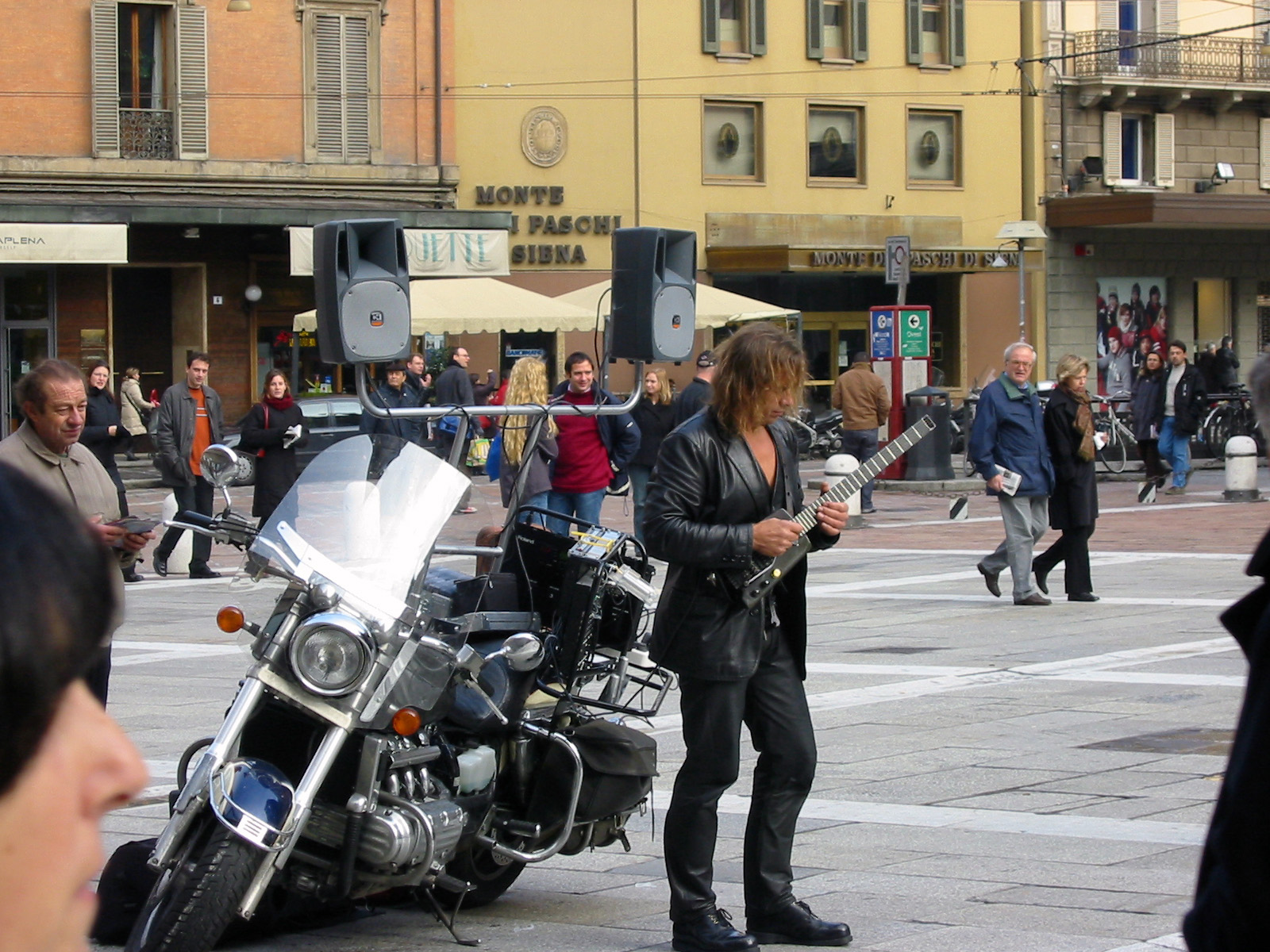 Bologna is also an international city for music and hosts a very large annual international Classical Music festival as well as the Bologna International Jazz Festival. There is a very good music club scene here. During our visit, a tough looking biker rode into the Piazza Maggiore, dismounted, pulled out his electric guitar and proceded to fan the flames onto some really heavy metal.
Bologna is also an international city for music and hosts a very large annual international Classical Music festival as well as the Bologna International Jazz Festival. There is a very good music club scene here. During our visit, a tough looking biker rode into the Piazza Maggiore, dismounted, pulled out his electric guitar and proceded to fan the flames onto some really heavy metal.
Most tourists (Italian and other) come here for the food…Emila Romagna is known as the best cuccina in Italy is from Emilia Romagna, although many other regions might disagree with this claim. However, we ate well, better than well. The loacal pasta isn’t just made fresh in the restaurants, it’s fresh in every grocery store. There is a rare prosciutto here known as Culatello di Zibello. Supposedly the fog that rolls off the Po River near the town of Zibello gives the meat a sweet taste and special fragrance. We’ve been stuffing ourselves with Lasagna Bolognese, pumpkin ravioli and tortellini, beef filet in a reduced balsamic vinegar from Modena, some sort of local spinach pie, sausages and home made mortadella, the original Bolonga (Baloney). We even had chocolate salami in cream sauce last night for dessert.
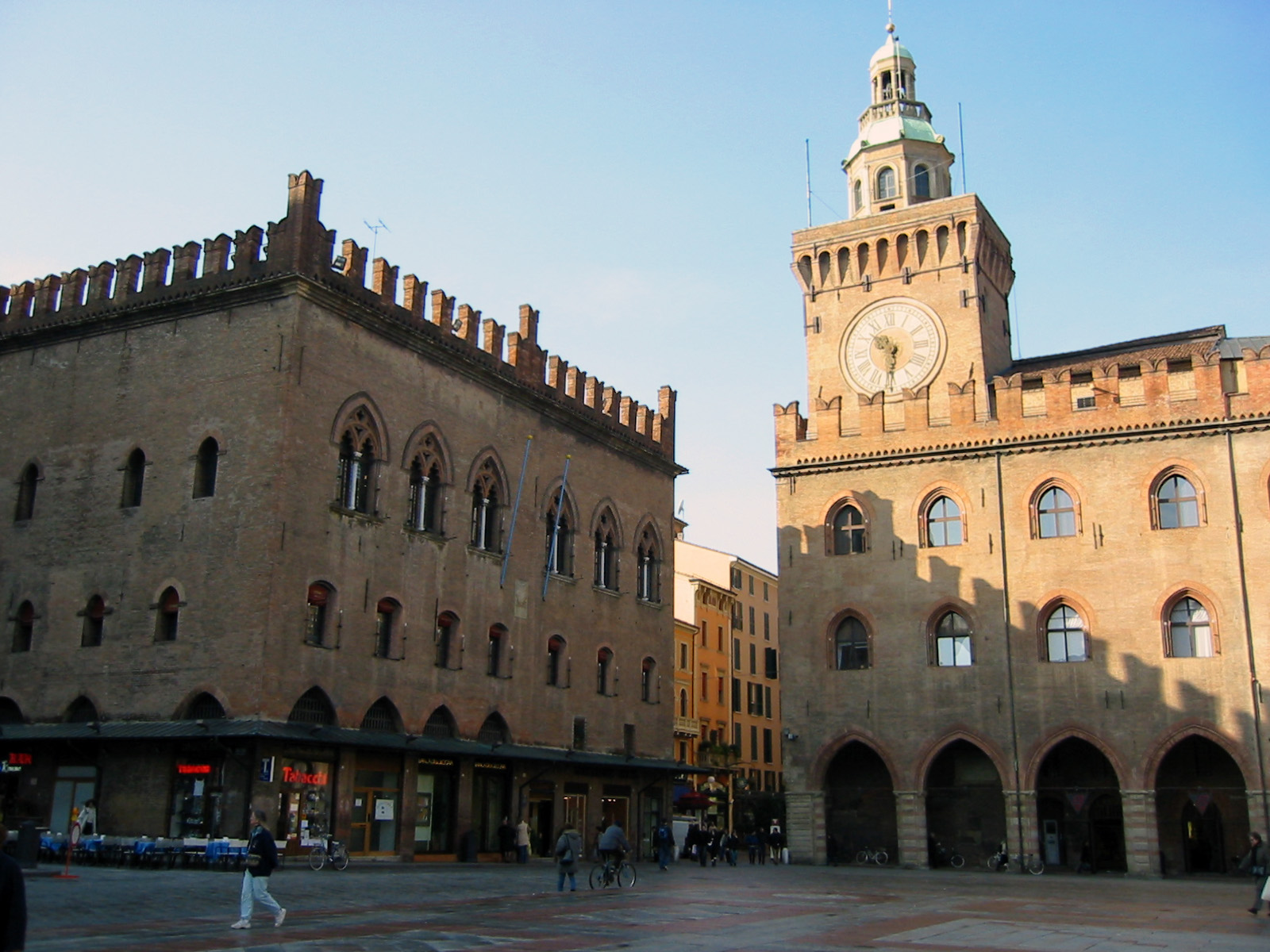
You must be logged in to post a comment.